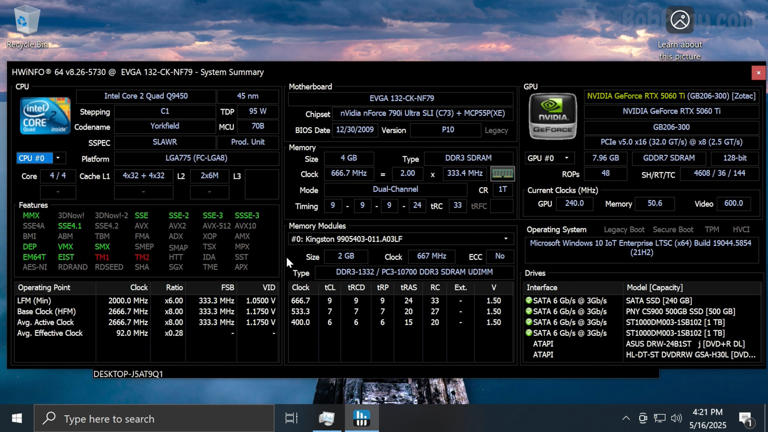In theory that would 2007-vintage silicon would play nice with an RTX 5060 Ti. However, when Twitter/X tinkerer Bob Pony tried slotting a modern RTX 50-series GPU into a wheezing old Core 2 Quad Q9450 system he was in for a buckload of pain.
According to Tom's Hardware while he got it to go, the time it takes a C2Q to boot Windows 11, the fairy tale began to unravel.
Pony’s retro rig could post and run a desktop, but ray-traced games, the thing RTX cards are made for, just wouldn't launch. Quake II RTX? crashed and none of the modern titles played. Turns out, even if the driver loads, the CPU still needs to speak a few languages invented after Vista. Instruction sets like AVX and friends which are missing in action, leaving ray tracing dreams looking about as viable as running Cyberpunk 2077 on a toaster.
“Can’t play the majority of games that use ray tracing due to the processor lacking some instruction sets,” Pony sighed on social media, alongside a screenshot of failure.

Still, it’s not all doom and thermal paste. Older games and non-RT workloads may run surprisingly well, especially if you’re upgrading from a GeForce 200-series relic. But this isn’t the start of a vintage gaming renaissance. It’s more of a science experiment, or an excuse to see how far one can bend time and logic in a PCIe slot.
So, while Nvidia’s latest drivers technically support ancient CPUs it does not mean your Frankenbuild is suddenly esports ready. Call it what it is, a fun party trick for the BIOS crowd (who, face it, don't get invited to many parties).
And if you’re still holding out hope for ray tracing on a Core 2 Duo, don’t.




